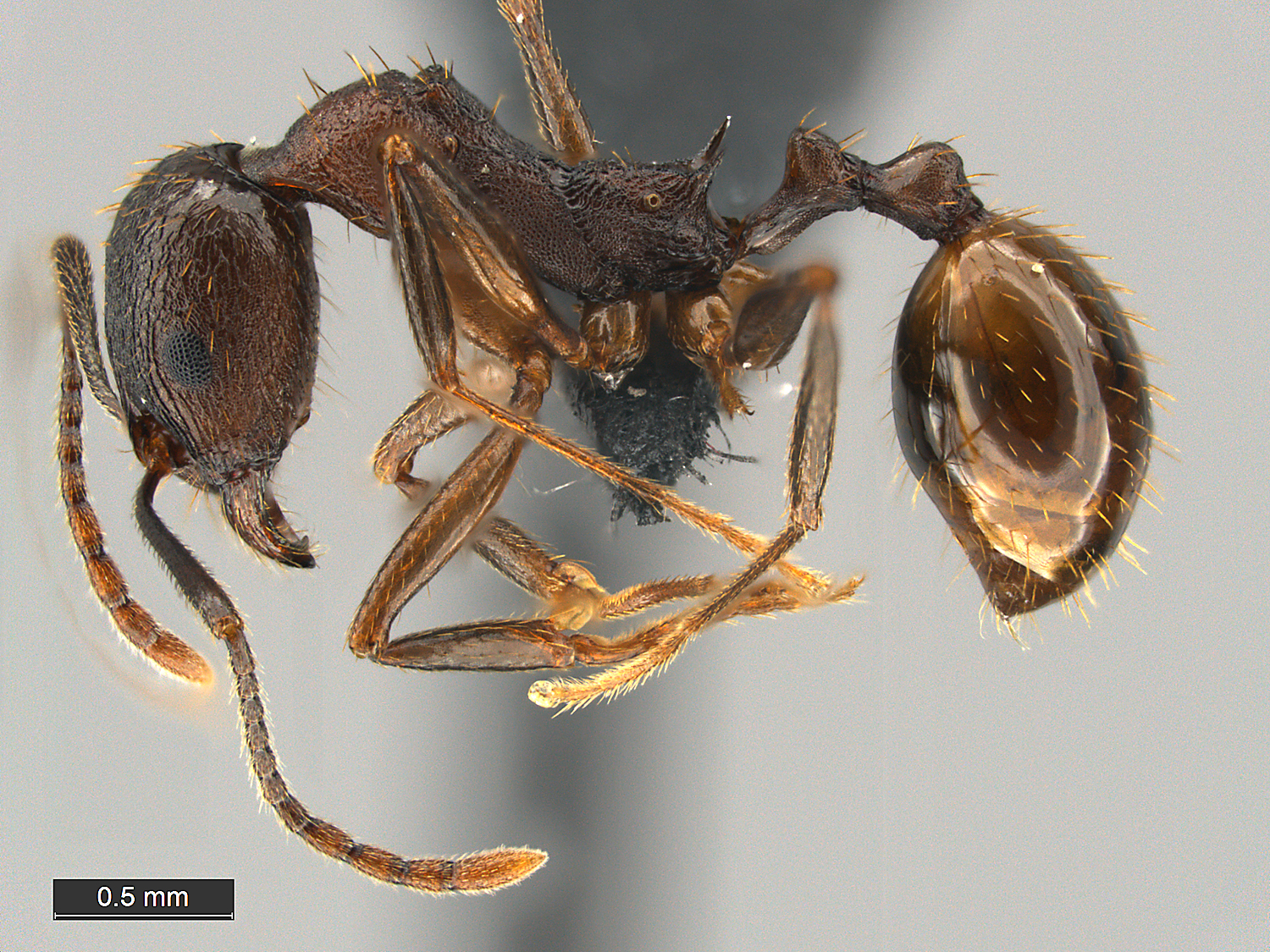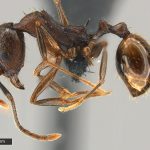 Aphaenogaster fulva image provided by www.AntWiki.com
Aphaenogaster fulva image provided by www.AntWiki.com Medium to very dark reddish-brown, mandibles slightly paler, antennae apically and legs apically and basally paler; head with rugoes/reticulate sculpture, alitrunk rugose/puntate, both moderately dull to weakly glossy. This species is part of the fulva-rudis-picea complex but the characters in the key have worked consistently for Ohio material. The coarser sculpturing, more prominent mesonotal protuberance, bicolored antennae, and long propodeal spines are diagnostic characters. The female has a fully rugose mesopleura which is mostly smooth and glossy in A. picea and A. rudis.
Both A. rudis and A. picea (q.v.) were long considered varieties of subspecies of A. fulva.
The species name “fulva,” meaning tawny or reddish-yellow, refers to the predominant color of this ant. This is a moderately common species with distinct sulpturing.
Size
Nuptial Flight Dates
Habitat
Food
Behavior
Nesting Information
Verified Locales (counties)
Adams, Allen, Brown, Butler, Champaign, Clark, Clermont, Clinton, Crawford, Darke, Franklin, Fulton, Gallia, Greene, Guernsey, Hamilton, Highland, Hocking, Holmes, Huron, Lawrence, Marion, Mercer, Miami, Montgomery, Noble, Pike, Preble, Scioto, Shelby, Tuscarawas, Van Wert, Warren,


